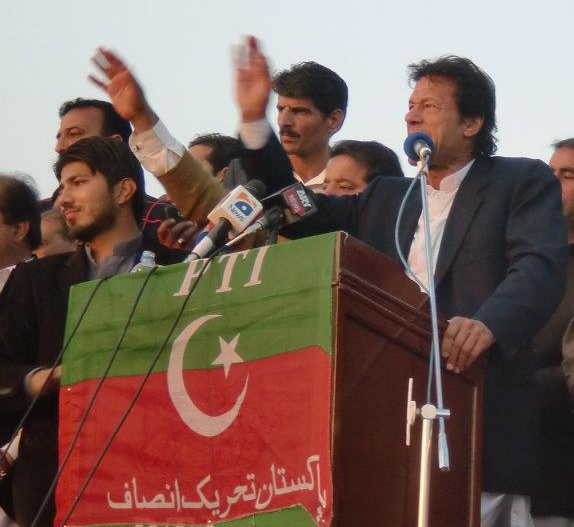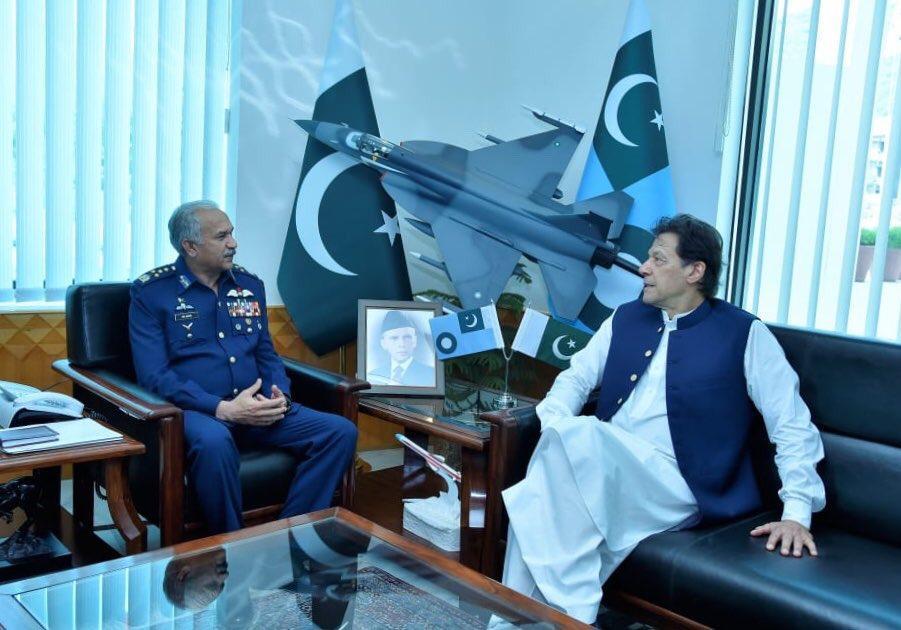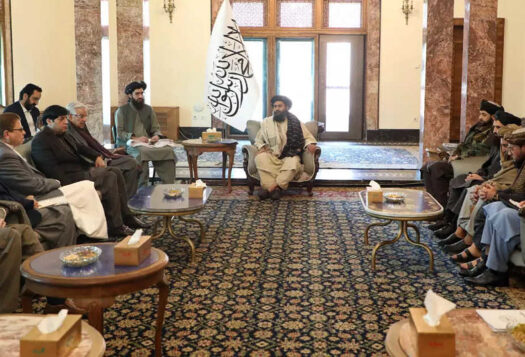
Former Pakistani Prime Minister Imran Khan was shot and injured during a protest rally in Punjab province on November 3. At least six others were wounded in the firing, and one bystander was killed. Stimson South Asia Program Director Elizabeth Threlkeld puts the attack on the Pakistan Tehreek-e-Insaaf (PTI) leader in context and explains what it could mean for the country going forward.
What Do We Know About the Attack So Far?
While it is important to emphasize that details of the incident are still emerging, we know that Imran Khan was shot in the leg while leading a “long march” protest in the eastern city of Wazirabad. One gunman is in police custody, who claims to have acted alone because Imran Khan was “leading people astray.” Khan and others at the rally suggest a second gunman was involved, citing reports of automatic gunfire, though no further details have been confirmed.
What Has the Response Been to the Incident?
Pakistan’s Prime Minister Shehbaz Sharif and other government leaders condemned the attack, as did Pakistan’s military via its press office. The U.S. and states around the world followed suit. A PTI leader released a now-banned video statement conveying a message from Khan, in which he accused three people of involvement in the attack – the Prime Minister, the Interior Minister, and the Major General leading the intelligence agency’s counterintelligence wing. The Interior Minister denied the allegations in a press conference and warned of consequences should PTI supporters further fan the flames. Videos of protesters chanting slogans and blocking roads in some urban centers circulated on social media, including outside the Army’s Corps Command headquarters in Peshawar.
Khan further demanded that Pakistan’s Army Chief take action against “black sheep” within the military and pledged to return to the protest and target Islamabad once he had recovered.
Khan addressed the nation from the hospital on Friday, claiming he had advance warning of the attack and blaming the same three individuals. He demanded their resignations and called on his supporters to maintain pressure on the streets until they complied. Khan further demanded that Pakistan’s Army Chief take action against “black sheep” within the military and pledged to return to the protest and target Islamabad once he had recovered. Pakistan’s military responded with a strongly worded statement criticizing Khan’s “baseless and irresponsible allegations” as “absolutely unacceptable and uncalled for.”
Why is the Timing of the Attack Significant?
November was already shaping up as a momentous month in Pakistan, with the appointment of a new Army Chief expected by the 29th. The post is seen as the most powerful position in Pakistan and is decided by the Prime Minister based on a list of candidates provided by the Army. In a country where the military is widely considered the most significant institution, this selection process gives Pakistan’s civilian leader a rare opportunity to try to shape its future direction. It is also a fraught decision, with repeated examples of Prime Ministers later being deposed by the very Chiefs they selected.
This changing of the guard is likely one motivating factor in the timing of Imran Khan’s protest, which began last week in Lahore after Khan was allegedly denied a say in the decision through backchannel negotiations. Khan was ousted in a no-confidence vote in April, which he alleges without evidence was a conspiracy with U.S. backing led by the now-ruling coalition. He claims the then-opposition removed him from power out of fear that he would nominate his preferred pick, Lt. Gen. Faiz Hameed, to be the next Army Chief. This followed a controversy in October 2021 when Khan briefly sought to overrule military transfer plans and retain Hameed as the leader of Pakistan’s Inter-Services Intelligence agency. Supporters of the ruling Pakistan Muslim League-Nawaz party accused Hameed of having facilitated the removal and disqualification of their former Prime Minister Nawaz Sharif and backed Khan’s 2018 election.
Imran Khan’s popularity has rebounded since his ouster, due in part to unpopular economic decisions his successor has been forced to take. The current long march is the second such protest Khan has held since the spring demanding early elections. In addition to committed PTI supporters, he has also attracted many who are frustrated with Pakistan’s current political dispensation – including the military’s role despite its proclaimed neutrality. The ranks of those disaffected swelled further following the October murder of pro-PTI television anchor Arshad Sharif, who was killed by police in Kenya in an alleged case of mistaken identity that has raised questions in Pakistan and prompted unprecedented state denials. Khan faces a series of legal challenges and was disqualified from holding public office on corruption charges in an October Election Commission ruling, though the decision is limited in scope and on appeal.
What’s Likely to Happen Next?
In the immediate term, Khan’s supporters are likely to continue their protests while he recovers from his injuries, putting additional pressure on the government and the military. With tempers high and accusations flying, the risk of confrontation between protesters and security forces is serious. PTI leaders say a red line has been crossed. The military has pledged it will defend the “honour, safety and prestige of its rank and file” and “safeguard its officers and soldiers no matter what,” calling for legal action to be taken. Khan built some flexibility into the timeline for his march on Islamabad as it will depend on his recovery, though any significant delay risks losing his current momentum. If PTI can gather and sustain crowds large enough to meaningfully disrupt life in the capital, the question will be whether pragmatic voices on all sides can identify and agree to a workable offramp amid intense polarization and anger.
The government, meanwhile, will focus on riding out the protests and holding off pressure for early elections in the hope that PTI’s popularity will diminish over time. Also on their plate is managing a smooth selection process for the next the Army Chief. He (and it will be a he) will take the helm after the institution has suffered months of highly unusual direct, public attacks on its leadership. The new Chief’s appointment represents an opportunity to try to turn the page and restore confidence in the institution, though one that could be jeopardized should the political impasse continue.
What Could this Mean for Pakistan Going Forward?
Going forward, much will depend on whether Khan seeks to continue working within the system or turns against it, and how long the military is willing to tolerate his direct accusations. Thus far, Khan has tried to follow the former course, pairing threats and calls for protests with appeals for the assistance of the Army Chief. The military’s patience seems to be wearing thin, however, which could presage intensified pressure on PTI at a perilous time. In the end, the current system will likely limp along, damaged by this incident but perpetuated by the vested interests of those dependent on it for wealth and influence.
This attack also exposes a troubling vulnerability for PTI, which lacks any viable candidate to replace Khan’s charismatic populist appeal should he be sidelined. He is synonymous with the party, and without him, its existing leadership would struggle to maintain coherence and sustain popular support beyond an expected initial surge of public anger. Khan’s very lack of dynastic ties – one factor differentiating him (though not his party) from other Pakistani politicians and driving his popularity – limits avenues for PTI’s resilience through a clear succession strategy.

Navigating the current political crisis will be both challenging and vital at a time when Pakistan faces threats on multiple fronts. Its economy is in dire straits, with creditors downgrading its rating to junk status and foreign friends reluctant to help as it faces a potentially unsustainable debt burden, punishing inflation, and rising energy and import costs. Parts of Pakistan are still under water from climate change-linked flooding in September that left one-third of the country submerged and impacted some 33 million people. Pakistan also faces internal security challenges from the resurgent Tehreek-e-Taliban Pakistan, which the state has tried and failed to contain through negotiations and now threatens to extend its reach.
What Should be Done to Manage the Fallout?
A top priority for Pakistan’s federal government and the provincial authorities in Punjab province should be identifying ways of reducing tensions while carrying out a detailed, transparent investigation into the attack. Goodwill gestures could be especially meaningful in this scenario, including a potential visit by Pakistan’s Prime Minister to see Khan in the hospital. Investigators looking into the attack would do well to apply lessons learned from the aftermath of the last attack Pakistan suffered of this kind – the successful assassination of Benazir Bhutto in 2007. Both the security arrangements that contributed to her death and the subsequent investigation were widely criticized both domestically and internationally, a situation which must be avoided in this case.
Likewise a swift review of security protocols for political rallies is urgently needed. This should seek both to mitigate the chances that such an attack could take place in the future and to increase the likelihood that any attack that were carried out would not succeed. Pakistan has unfortunately suffered a long history of political violence against political leaders of all parties and affiliations, beginning with the assassination of its first Prime Minister in 1951. At a time of such intense political polarization and public anger, appropriate security precautions must be taken to protect its leaders.
A top priority for Pakistan’s federal government and the provincial authorities in Punjab province should be identifying ways of reducing tensions while carrying out a detailed, transparent investigation into the attack.
In terms of implications for U.S. policy, the swift condemnation of the attack, well wishes for those injured, and appeals for calm from both the White House and Secretary of State sent an important message. Relations between the Biden Administration and Khan were cool following both his repeated and unsubstantiated claims of U.S. involvement in his ouster in April and his apparent celebration of the Taliban takeover in Afghanistan. Khan, in turn, was reportedly frustrated at Biden’s lack of outreach while in office. Going forward, both sides should seek to rebuild effective working relations while managing their differences, as Khan seems likely to remain a force heading into Pakistan’s next elections and beyond.
***
Image 1: Wikimedia Commons
Image 2: Inter Services Public Relations (ISPR) via Wikimedia Commons


